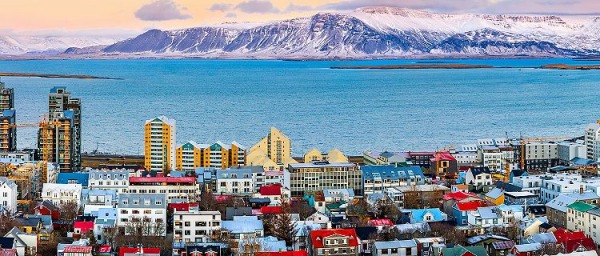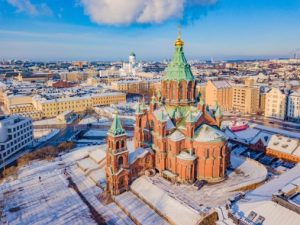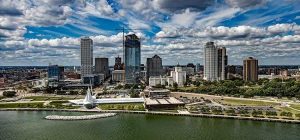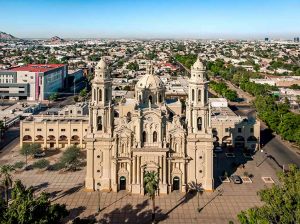Reykjavik is the capital and largest city of the island state of Iceland. It is located in southwestern Iceland, on the southern shore of Faxaflói bay. Its latitude is 64°08′ N, making it the world’s northernmost capital of a sovereign state. With a population of around 131,136, it is the center of Iceland’s cultural, economic, and governmental activity and is a popular tourist destination.
Warnings & Dangers in Reykjavik

OVERALL RISK : LOW
Rekjavik is one of the safest cities in Iceland and Europe. The only thing to be afraid of is petty thefts, drunken locals, and the unusually bright night sky in summer.

TRANSPORT & TAXIS RISK : LOW
Public transport in Reykjavik is safe and reliable and can be used to get around. Taxis are also reliable. If you are traveling by your own car, be careful on the roads - local drivers can drive quite roughly.

PICKPOCKETS RISK : LOW
As elsewhere in tourist spots, pickpockets are found in Rekvik. Just keep track of your belongings and your wallet. The usual precautions are sufficient.

NATURAL DISASTERS RISK : MEDIUM
Rekjavik is located in an active seismic zone and has active volcanoes, so there is a risk of volcanic eruptions and the possibility of the release of sulfur dioxide and other volcanic gases during eruptions.

MUGGING RISK : LOW
The risk of serious robbery and armed attacks is shallow in Reykjavík. There is little danger of these attacks in the suburbs. However, the likelihood that you will be attacked is minimal.

TERRORISM RISK : LOW
The risk of terrorism is low in Reykjavík. The global risk of terrorist attacks in public areas exists worldwide, so tourists should be vigilant.

SCAMS RISK : LOW
Reykjavik has a shallow risk of fraud; you can say here you are not in danger of being cheated.

WOMEN TRAVELERS RISK : LOW
Women traveling alone can feel quite safe in Reykjavik. The main thing is to adhere to the usual precautions and monitor your surroundings. It is better not to walk alone at night.
How Safe Is Reykjavik for Tourists?
Reykjavik, like Iceland itself, is a very safe city.
The crime index here is at a low level.
The main problems are associated with petty theft and vandalism.
Iceland is considered one of the safest countries in the world.
Tourists should avoid drunk local guys who are ready to fight after getting drunk.
However, most people are amiable, and the police are friendly and helpful.
Recently, petty thefts have occurred from time to time in Reykjavik.
However, even with these issues in mind, Reykjavik is much safer than most other western cities and certainly safer than other countries’ major capitals.
Even though Reykjavik doesn’t have a large population, rush hour traffic can be a nightmare.
This is due to the increase in the number of cars and the narrow street system.
If you plan to travel somewhere by car or bus, try to do it after about 16: 00-18: 30, as this is when most motorists come home from work.
Keep in mind that the sun does not completely set in summer – the polar day lasts until dawn.
Lack of night, which at first seemed like a novelty, can quickly disrupt your sleep and lead to general fatigue.
When visiting in summer, be sure to bring a sleep mask with you.
Do I Need a Visa to Visit Reykjavik?
A visa is not required for visits of up to 90 days in a 180‑day period for nationals of those countries for which the European Community has abolished the visa requirement. A valid passport is a must.
Which Currency Is Used in Reykjavik?
The króna or krona is the currency of Iceland. The Icelandic krone is subdivided into 100 Eyrir (out of circulation).
How's the Weather like in Reykjavik?
In Reykjavík, the summers are short, cool, and mostly cloudy, and the winters are long, very cold, wet, windy, and overcast. The best time to visit Reykjavik is from June to August.
What Do I Need to Know about Airports in Reykjavik?
There are two main airports in Iceland and are the Reykjavík Airport and the Keflavik International Airport. Keflavík International Airport is located 50 km southwest of Reykjavík, in the town of Keflavík, and it operates with international airlines.
Should I Get Travel Insurance for My Travels?
A travel insurance policy is a must when visiting a foreign country or city. Make sure you got it before starting your journey; the customs officer may ask for it.
What Are Some Things to Do in Reykjavik?
The city houses the National Museum and the Museum of Sagas, the exposition of which is devoted to the history of the settlement of the country by Vikings. The impressive concrete church Hallgrimskirkja and the revolving glass dome “Perlan” offer views of the sea and the surrounding hills. A striking confirmation of the volcanic island nature is the geothermal mineral lake Blue Lagoon, which lies not far from Grindavik.
Is the Water in Reykjavik Safe to Drink?
It is safe to drink tap water, and 95% of all water in Iceland comes from springs. It is, in fact, one of the cleanest and most delicious drinking water in the world.
Is Uber Safe in Reykjavik?
There is no Uber taxi in Reykjavík. You can use any other local taxi services.




